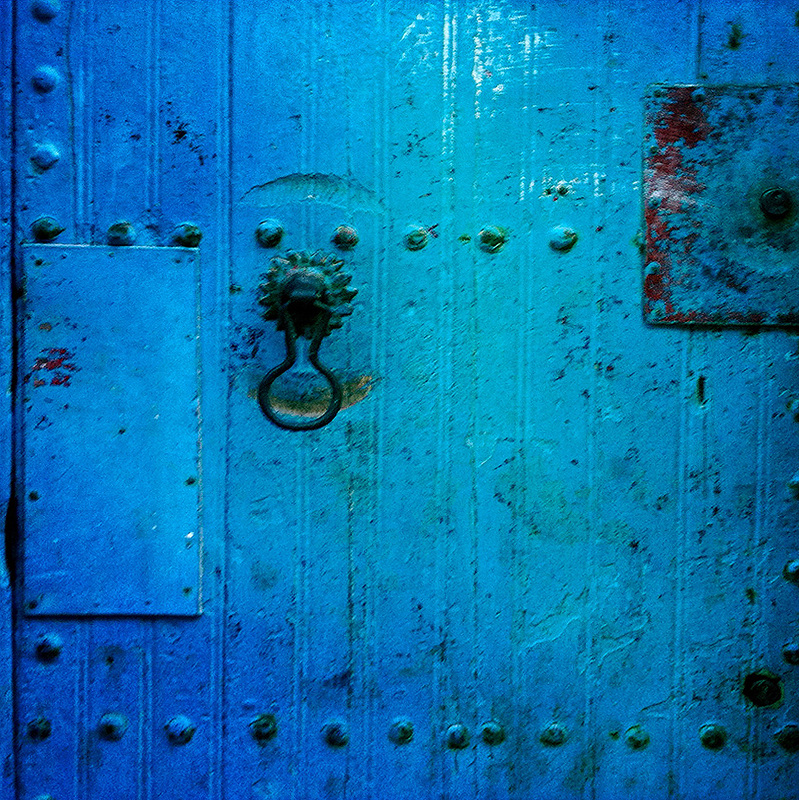So what is this blue all about? I do some research and find it’s a bit puzzling. Stories interlace and contradict.
Scholars write that at certain times in Moorish Spain, and other parts of the Islamic world, blue was the color for Christians and Jews, because only Muslims were allowed to wear white and green. In the Islamic world blue really was of secondary importance to green, but dark blue and turquoise decorative tiles were commonly used to decorate the facades and interiors of mosques and palaces, from Spain to Central Asia.
I read that dark blue is the traditional color for good karma, positive energies and protection against the ‘Evil Eye’, and that this goes for light blue as well, with the difference light blue is also the color of the sky, so it symbolizes truth. Hence, the blue doors prevalent in a lot of places around the world, especially in the Mediterranean regions, are likely there because they are believed to repel evil. Some say it also serves as a mosquito repellant because “mosquitoes only like yellow”, and that light blue is used to mark Andalucíans homes.
Blue are also the turbans worn by the men of the Tuareg people in North Africa, in protection against the sun and wind-blown sand of the Sahara desert. Instead of using dye, which uses precious water, the turbans are colored by pounding the fabric with powdered indigo. The blue color transfers to the skin, where it is seen as a sign of nobility and affluence. Early visitors called them the "Blue Men" of the Sahara.
On the other hand, in the western hemisphere blue is associated with labor and the working class. It is the common color of overalls, blue jeans and other working costumes.
Then again, someone with ‘blue blood’ can also be a member of the nobility. I find out the term comes from the Spanish sangre azul, and is said to refer to the pale skin and prominent blue veins of Spanish nobles.
And, of course, blue is commonly used in Spain, as in several other cultures, to symbolize boys, in contrast to pink, which used for girls. It’s just that in the early 1900s, blue was the color for girls, since it had traditionally been the color of the Virgin Mary, while pink was for boys as it was akin to the color red considered a masculine color.
I could go on. Ultramarine, cerulean, cobalt blue, Prussian blue… In ancient days blue thread was actually made from a dye extracted from a Mediterranean snail, hilazon, but the garment had to be exposed to the sun, the ultraviolet light, which transformed the more purple colorant to unadulterated blue. Most blue pigments were made from minerals though, especially lapis lazuli and azurite. It was crushed, grounded into powder and mixed with egg yolk and other binders - and made into striking rich blues of all shades and nuances.
History can be gorgeous, subjected to the sun, the time, layer after layer, and eventually blended with contemporariness’. I acquire another blue gandora and stride the streets one more time, before taking the ferry back, across the blue Mediterranean Sea..

 RSS Feed
RSS Feed

